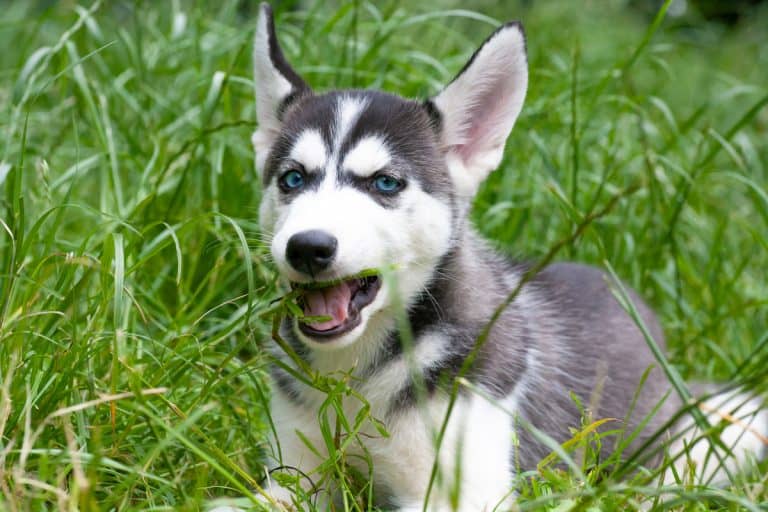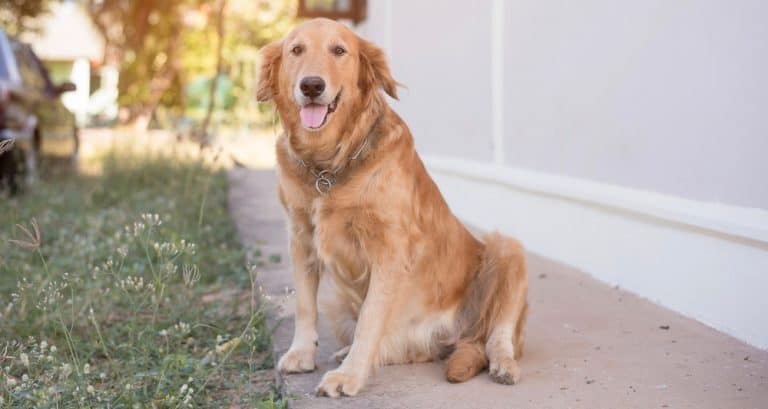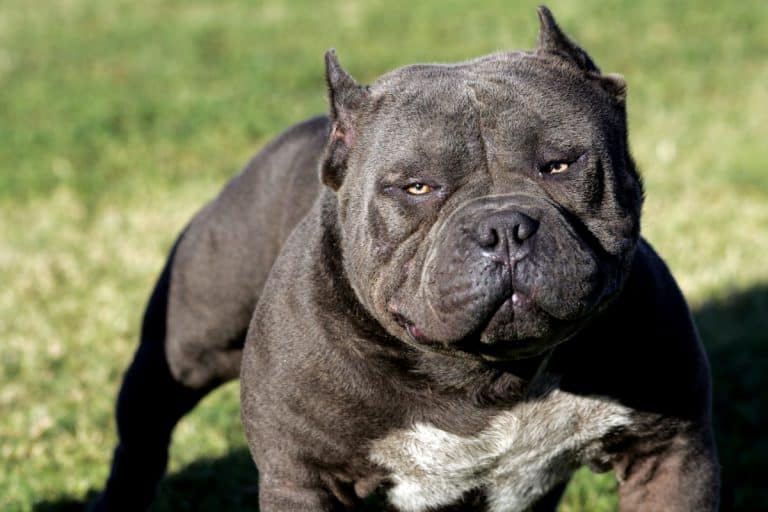Basenji Weight Chart – Size & Growth Chart
The Basenji is one of the oldest dog breeds and is known for their aristocratic and beautiful appearance.
As an owner, you should keep a Basenji growth chart to help you monitor your puppy as they grow and prepare you on what to expect from each milestone.
On average, a Basenji is fully grown when they reach the age of 14 months. A male Basenji stands at a height of between 16 and 17 inches and weighs between 22 and 26 pounds.
On the other hand, a female Basenji stands at a height of between 16 and 17 inches and weighs between 20 and 24 inches.
Read on to learn more about the growth of a Basenji puppy, health issues that can affect them as a breed as well as factors that affect their growth.
When Is A Basenji Fully Grown?

Dogs achieve physical and mental growth at different times. First, they will reach their physical maturity at the age of 12 and 14 months.
Spayed or neutered Basenji may continue growing even after 14 months because of a lack of hormones. Some factors affect the growth of a Basenji puppy such as diet, physical activity, health, and genetics.
Therefore, you should feed your puppy a healthy and complete diet to ensure that they are getting all the necessary nutrients they need for optimal growth.
Exercising your puppy will ensure that they have an outlet for their energy, and they stay active and mentally stimulated.
Basenjis are mentally mature at the age of around 18 months, though some puppies may take longer.
Basenji Size Chart
Monitoring the weight of your Basenji puppy will ensure that they are not overweight, underweight, or obese.
Abnormal weight can lead to diseases such as joint issues, diabetes, heart disease, and breathing problems. Therefore, measuring your puppy’s weight regularly will ensure that they are maintaining a healthy weight.
At the age of three months, your Basenji should weigh around 4 pounds, at six months they should weigh around 12 pounds and at 9 months they should weigh around 19 pounds.
Basenji Weight Chart
| Age | Weight (lbs) | Weight (kg) |
|---|---|---|
| 3 Months | 4 lbs | 1.8 kg |
| 4 Months | 6 lbs | 2.7 kg |
| 5 Months | 9 lbs | 4 kg |
| 6 Months | 12 lbs | 5.4 kg |
| 7 Months | 15 lbs | 6.8 kg |
| 8 Months | 17 lbs | 7.7 kg |
| 9 Months | 19 lbs | 8.6 kg |
| 10 Months | 21 lbs | 9.5 kg |
| 11 Months | 23 lbs | 10.5 kg |
| 12 Months | 24 lbs | 10.8 kg |
Basenji Growth Chart – What To Expect
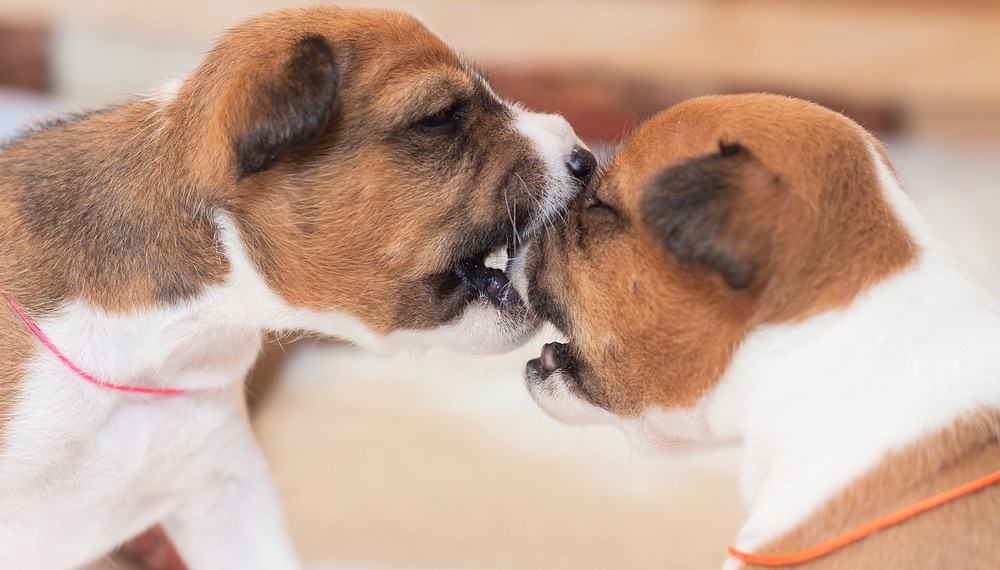
The following are stages of your Basenji’s growth and development, from birth to when they are adults:
Birth – 2 Weeks
This is the neonatal stage, and your puppy is deaf and blind because their eyes and ears are not yet developed. They are not able to regulate their body temperature and depend on their mother for warmth.
At this stage, the puppy does not have any teeth and only drinks the mother’s milk as a source of their nutrition. your puppy will be sleeping constantly, and the mother will be doing most of the work including keeping them clean.
3 Weeks – 12 Weeks
Between three and four weeks, the puppy’s eyes, and ears open, the teeth begin to come out, and they will eliminate without the help of their mother.
They also start becoming aware and curious about their surroundings and recognize other animals and people.

At this stage, the puppies learn how to socialize and interact with their siblings. At four weeks, you can introduce food to your puppy so that by the time they reach eight weeks old they are ready to move to their new home.
4 Months – 9 Months
At this stage, your puppy enters the juvenile period where they are more independent and may ignore certain commands.
This makes it the right time to train them on obedience and agility. They will also test your authority and will test your limits when it comes to dominance.
Continuous training will enable them to understand the ranking in terms of submission and dominance and where they stand in the pack which is your household.
They will also go through the adolescent stage, so speak to your vet about spaying or neutering your puppy.
10 Months – 18 Months
This is the stage where your puppy achieves most of their growth milestones. They achieve their physical maturity at around the age of 14 months, where they reach their adult weight and height.
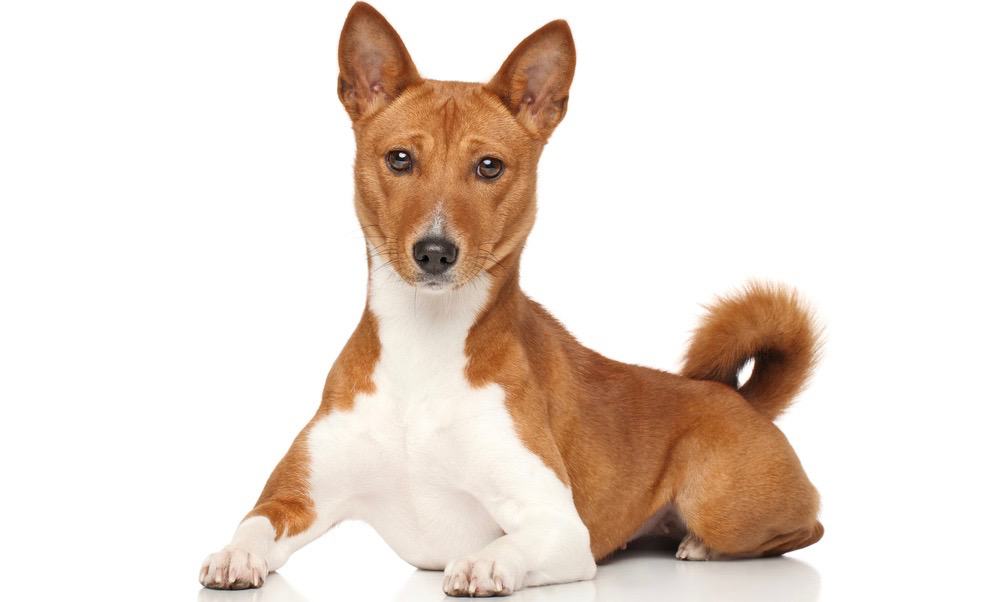
They are also mentally matured at the age of 18 months, but some puppies may keep their puppy behavior longer.
Adult
As adults, Basenjis gave grown mentally, sexually, and physically and all they need is a healthy diet, adequate exercise, and regular visits to the vet to ensure that they live a long and healthy life.
How Big Do Basenjis Get?
Are you wondering how big your Basenji puppy will get? There are ways in which you can predict the Basenji size chart. First, look at their parents.
If the parents are small, chances are high that your puppy will be small and if the parents are large, then your puppy will be large. This is because physical characteristics are passed down from parents to puppies.
Another way is to look at your puppy’s paws. If they are large, it means that your puppy is still growing so that the body can match the large paws.
If they are small, your puppy is likely to have reached their adult size.
Finally, you can do a DNA test to know the lineage of your puppy especially if you do not have access to the parents.
Generally, a female Basenji stands at a height of between 16 and 17 inches and weighs between 20 and 24 inches.
On the other hand, a male Basenji stands at a similar height of between 16 and 17 inches and weighs between 22 and 26 pounds.
Will Neutering/Spaying My Basenji Affect His Growth?
Neutering and spaying involve the surgical removal of the testicles in male dogs and ovaries in female dogs respectively.
These processes can affect the growth of your puppy if they are done too early, meaning your puppy can grow to be taller than average.
This is because the hormones that signal the closure of the growth plates are removed during these procedures.
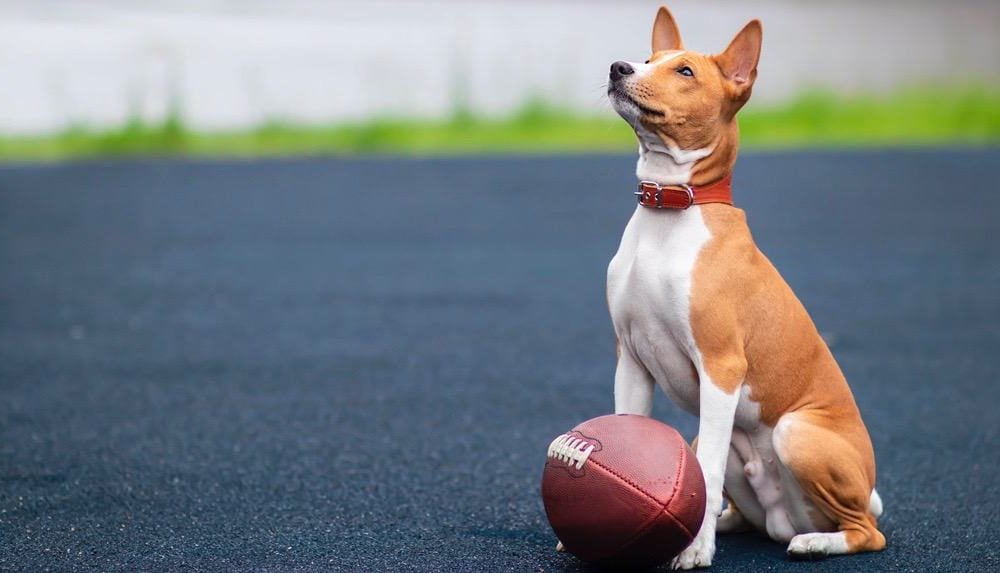
Basenjis should be spayed or neutered between the ages of 4 and 9 months depending on your puppy’s gender. Speak to your vet about this.
There are benefits to spaying and neutering your puppy including minimizing the risk of testicular cancer in male dogs and ovarian cancer in females.
These procedures also prevent unwanted pregnancies in females and aggressive behaviors in males.
Basenji Height Chart
Knowing the height measurements of your puppy is essential for many reasons. First, you will need the measurements to buy a harness and clothing.
Secondly, the measurements will help you find the right kennel and kennel door for your puppy. Finally, if your dog participates in dog shows, you will be required to present their height measurements.
To measure your puppy’s height, ensure that they are standing straight on a flat surface.
Then take the measuring tape and measure from the ground to the withers. If your dog cannot stand still, let someone else hold them for you.
On average, the height of a Basenji ranges from 16 and 17 inches.
Shiba Inu Vs Basenji Size
Shiba Inu is a medium-sized dog. A full-grown male stands at 14.5 to 16.5 inches while females stand at 13.5 to 15.5 inches. The weight of a male Shiba Inu is around 23 pounds and a female weighs around 17 pounds.
Basenjis are also medium-sized dogs. The male Basenjis stands tall at around 17 inches while their female counterparts stand at around 16 inches. The male weighs around 24 pounds and the female weighs around 22 pounds.
Factors That Affect Basenji Growth
Genetics And Gender
Genetics contributes a lot to the growth of every dog. You get to understand the size that your dog will grow to by looking at the parents.
Also, you can know if there are any underlying genetic conditions your dog might have. Before adopting your puppy, ensure you are well conversant with the history of the parent breed. Female Basenjis are smaller than male Basenjis.
Nutrition
Basenji needs a high-quality meal whether they are home-prepared or commercially prepared. The diet should be appropriate to the age of the puppy, adult, or senior.
Be careful with your dog’s weight level and calorie consumption. Treats are good because they help in training, but too much of it causes obesity.

Understand the human foods that are safe for your Basenji. If you have any concerns about your dog’s diet or weight, consult with your vet. Provide clean and fresh water to your puppy all the time.
Physical Activity and Health
Basenji requires a lot of regular exercises to prevent them from boredom. It is because they are inquisitive, energetic, and very active.
Give your dog long plays in a well-fenced yard and supervise him, and do not allow them to run on the loose because they are naturally a hunter. Exercise helps basenji to stay healthy and keep their metabolism up.
What If My Basenji Is Not Right Weight?
Dogs are likely to overeat then undereat. This can lead to overweight or obesity. A strict diet plan without exercise and too many treats can still make your dog obese.
Obesity is dangerous because it can lead to some health problems such as diabetes, arthritis, respiratory problems, heat intolerance, liver disease, and lameness.
These can lead to poor quality of life and a short lifespan. Therefore, to avoid these conditions, take your dog for regular walks, stop the table scraps and treats, and switch to a low-carb diet.
Being underweight in dogs can lead to serious health problems including the body shutting down to save energy. If you prolong underfeeding, your dog will not get enough nutrients that help them to grow healthy.
It leads to stunted growth or a weak immune system. You can tell your puppy is underweight when the ribs and spine are pronounced or when you feel their ribs you find no hint of fat or muscles.
If your puppy doesn’t eat, consult with your veterinarian to diagnose the problem and develop a plan to follow. You can begin feeding your puppy small and regular meals until they can digest their food.
If the vet finds no problem with the dog, ensure they eat in a comfortable and quiet place and offer them a few treats to encourage their diet.
Basenji Genetics And Common Health Problems
Basenjis are generally a healthy breed, but they are prone to some health conditions including the following:
Hip dysplasia – This condition is genetic and happens when the thigh bone does not fit well into the hip joint. Your dog may show lameness and pain on one or both legs, and sometimes you may not be able to notice anything.
This can cause the development of arthritis later as the dog ages. Therefore, when you want to adopt a puppy, ask for proof that the parent breed has been tested and is free of the problem.
Umbilical hernia – This happens at birth where the internal organs or abdominal fat protrude against the walls of the abdomen near the umbilicus.
Small hernias may close by six months, while some dogs have lived with it their whole lives.
However, large hernias need surgery to prevent serious conditions where the loop of the intestine drops into the hernia causing strangulation.
Other diseases include Progressive Retinal Atrophy (PRA), Coloboma, Persistent Pupillary Membrane (PPM), Hypothyroidism, and Fanconi Syndrome.
Final Words
Basenji is a smart and intelligent dog that is constantly aware of their surroundings. They are also polite and friendly to their owners and other family members, making them a good companion. However, they can be reserved with other animals and strangers.
Before bringing a Basenji home, you should do your research to ensure that they are the right pet for you. Understanding their growth and how big they will get will prepare you well as an owner.
You should also ensure that you take them to the vet regularly for a check-up so that any illnesses can be diagnosed at an early stage.
Hopefully, this article has given you enough information about the growth of a Basenji so that you can provide them with the care that they need to live a healthy and happy life.


